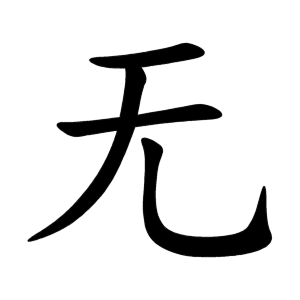无
- none, not exist;
It literally means "to not have" or "to be without".
Etymology
It is the ancient form of the character 無, representing the concept of non-existence or absence of something. In China, 无 is used as the simplified form of 無.
The exact origin is unknown, and its meaning is believed to have been assigned due to its phonetic similarity to "없을 무" (meaning "not exist").
Usage in Korean
This radical is extremely rare.
In many non-Korean Chinese character dictionaries, the radical is excluded entirely due to its limited usage.
In some Japanese dictionaries, it is merged under the 牙 (tooth) radical.
In some Chinese dictionaries, the 无 radical (a simplified form of 旡) is omitted or reclassified.
This radical is mainly of historical interest and rarely encountered in modern usage.
Derived characters
As a radical, it includes the character 旡 (목멜 기, "to choke" or "to be unable to breathe"), which closely resembles 无.
Similar shape characters
Visually, it resembles the character for "sky" (天).
Characters with 无
- 一大山 (MKU)
- ⿱ 一 尢
